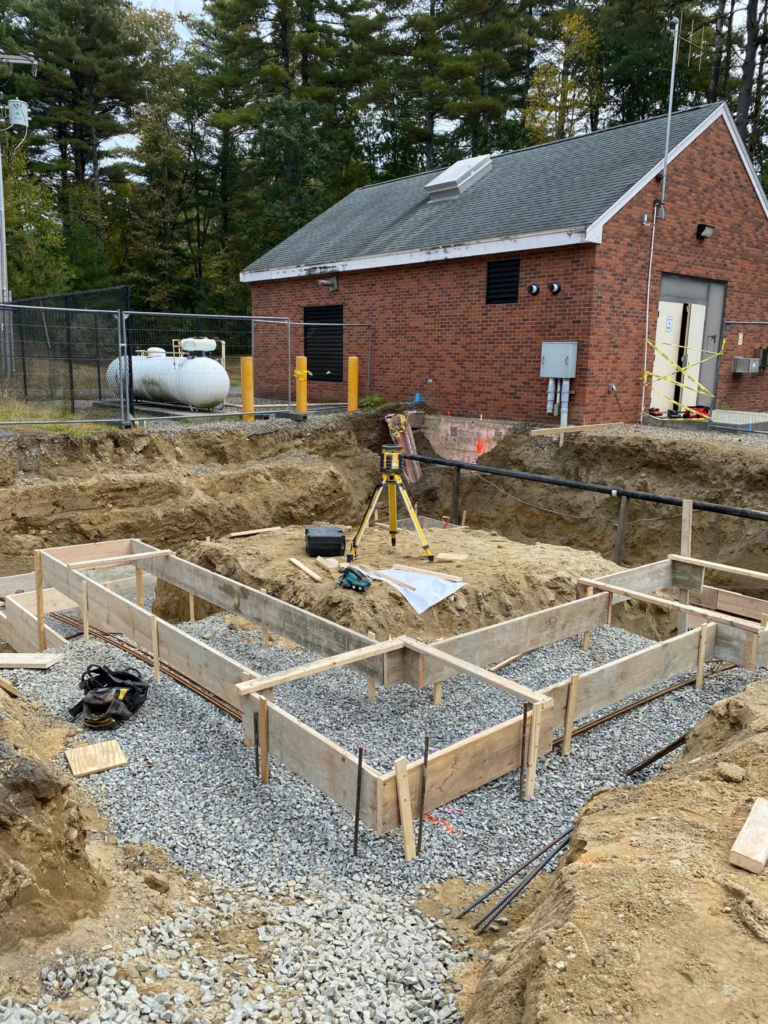The level of PFAs — per- and polyfluoroalkyl substances — in the town’s water supply is at a higher-than-maximum contaminant level allowed for the third straight month, putting Hopkinton in violation of the state drinking water regulations.
Department of Public Works Director John Westerling hosted an hour-long public information meeting Tuesday night with officials from the town and the Massachusetts Department of Environmental Protection (MassDEP) to explain the situation, how the PFAs content could affect vulnerable populations, and the steps that will be taken next.
PFAs are a group of man-made chemicals that have been manufactured and used in a variety of industries in the United States and around the world since the 1940s. They are found in products such as furniture wax and hairspray. PFAs are very persistent both in the environment and in the human body because they do not break down, so they accumulate over time.
Some of the harmful effects include problems with fetal development as well as possible liver, kidney and pancreatic cancer. They also can negatively affect blood and immune system function.
Westerling explained that the town’s water supply comes from eight wells as well as water purchased from Ashland. All of the wells are interconnected via pipes. The source of the slightly elevated level of PFAs has been found in Well 6, and it has increased, according to testing conducted last month.
“When people ask whether or not they are getting water from the affected Well No. 6, because all of our water becomes one once it becomes part of the system, we can’t tell you definitively whether or not you are receiving water from Well No. 6,” he said.
This is the reason that public information materials about PFAs went out to the entire town, he noted. Information also is available on the town website. Water is being blended at the Fruit Street water testing facility to reduce the amount of PFAs in Well 6.
Mary Jude Pigsley, the regional director of the MassDEP Central Regional Office, gave a presentation on PFAs and their effects, as well as Hopkinton’s sample results.
“They are man-made chemicals with an incredibly strong bond between carbon and chlorine molecules,” she said, noting they must be burned at 900 degrees Celsius in order to disintegrate them. “This is one of the strongest chemical bonds that you can have.”
Sensitive populations include infants, pregnant women, nursing mothers and people who are immunocompromised and who are drinking and cooking with this water in a residential setting, Pigsley said. People can reduce their risk of exposure by using bottled water.
“There is no home water treatment system that is certified to meet the DEP standard yet,” she added.
In October 2020, MassDEP adopted a strict drinking water standard, limiting the quantities of six specific PFA chemicals to no more than 20 parts per trillion. The Environmental Protection Agency, however, set the federal limit at 70 parts per trillion.
Samples from Well 6 collected in July detected PFA levels at 20.9 parts per trillion, while a follow-up test in August showed 20.5 parts per trillion, according to the presentation. The average of 20.7 is slightly above MassDEP’s standards.
A sample taken on Sept. 21 at the Fruit Street pump station showed 24.7 parts per trillion, triggering the process of public notification. If the sample is over 20 parts per trillion for three consecutive months, that technically puts the town in violation of the drinking water standard.
Pigsley added that the level at Well 6 was 37.2 parts per trillion in the last test.
A public notice will be sent out shortly notifying residents of the violation.
Sometimes PFAs are found near manufacturing facilities or after fires, Pigsley explained.
“If we can find the source, we can talk about cleaning it up,” she said. If the party that caused the contamination can be verified, that entity can be held responsible for the cost of the cleanup and possibly the cost of the water treatment.
She added that Massachusetts is one of the first states to have a drinking water standard. Although there is no federally enforceable drinking water standard yet, she said the EPA hopes to have one by 2023.
Zoom participant Paul Bonaceto asked if there were any possible sources that caused the contamination at the Fruit Street site.
Pigsley said that MassDEP relies on the knowledge of residents who may know of past facilities that may have contaminated the site. The Fruit Street facility is located near the highway.
Dave Roberts asked if Well No. 6 could be taken offline because of the high amount of PFAs.
“Well No. 6 is one of our greatest producing wells,” Westerling explained. “If we were to take that offline totally, we wouldn’t be able to meet the daily demands of the community.”
The blending facility combines the water from Wells 1, 2 and 6 to lower the concentration of manganese, he added.
A question was raised about reverse osmosis systems. Pigsley advised against them, noting that they waste three times as much water as they clean and then redistribute that water back into the septic system. Carbon units can take out some PFAs, but not up to the 20 parts per trillion.
Westerling said now that the town is considered in violation, it must come up with a plan within 30 days to either reimburse some people for bottled water or deduct money from their water bills.
Pigsley said that a short-term plan needs to be developed within 30 days of the notice to protect sensitive populations. After that, there is a 30-day window to develop a long-term plan. That may include treatment, a new well, or obtaining water from somewhere else, which would be a lengthy process.
















0 Comments